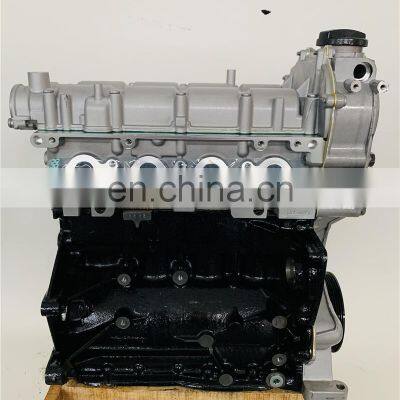Select a cutting-edge clp engine for superior results.
Select a cutting-edge clp engine for superior results.
Blog Article
How a Clp Engine Can Boost Efficiency in Numerous Industries
The development of CLP engines marks a significant shift in functional efficiency throughout various markets, driven by their ability to maximize fuel usage and minimize downtime. Industries such as production and logistics stand to gain substantially from their robust style and consistent power result, which guarantee to streamline procedures and enhance performance. As organizations significantly prioritize sustainability along with effectiveness, the role of CLP engines comes to be much more vital. What remains to be seen is exactly how these developments will form the future landscape of commercial operations and their influence on wider financial fads (clp engine).
Review of CLP Engines
CLP engines, or Constant Fluid Propellant engines, represent a significant innovation in propulsion innovation, specifically for space applications. These engines utilize a continuous feed system that permits the continual expulsion of propellant, leading to enhanced efficiency and performance compared to conventional solid or hybrid propulsion systems. By maintaining a continuous circulation of fluid propellant, CLP engines can achieve much more exact drive control, which is critical for maneuvering spacecraft in various mission scenarios.
The layout of CLP engines integrates innovative products and cutting-edge gas monitoring systems. clp engine. This causes lowered weight and raised integrity, essential elements for long-duration space objectives. Additionally, the continuous operation minimizes the risk of combustion instability, a common challenge in conventional rocket engines.

Benefits in Manufacturing
The production of Constant Liquid Propellant (CLP) engines provides a number of significant benefits that improve both performance and cost-effectiveness. One of the main benefits is the streamlined manufacturing procedure, which decreases the intricacy related to typical propulsion systems. By making use of liquid propellant, manufacturers can accomplish better precision in engine performance, bring about maximized energy outcome and lowered waste.
Additionally, CLP engines promote a greater level of modularity, enabling easier integration into numerous manufacturing lines. This flexibility can considerably lower lead times and improve total operational versatility. Making use of CLP innovation likewise often tends to lessen the need for substantial upkeep because of less relocating parts, which translates into decreased downtime and functional costs.

Applications in Logistics
Leveraging Continual Fluid Propellant (CLP) engines in logistics offers significant benefits in functional effectiveness and dependability. These engines supply a durable solution for different transportation demands, allowing the seamless motion of goods across substantial ranges. The inherent style of CLP engines permits regular power output, which translates right into smoother and extra predictable transportation timetables.
Among the essential applications of CLP engines in logistics is in durable products transportation, where they can drive both ground and airborne cars. Their capacity to maintain high efficiency under varying lots conditions makes certain that delivery timelines are satisfied, thus enhancing consumer complete satisfaction. Additionally, CLP engines can be incorporated into automated logistics systems, helping with real-time monitoring and enhancing path planning.
Additionally, the toughness of CLP engines minimizes upkeep downtime, enabling logistics companies to optimize their operational abilities. This is particularly click to find out more useful in warehousing procedures, where efficiency in dealing with and carrying goods is crucial. As logistics proceeds to evolve, the combination of CLP engines stands for a forward-thinking technique that not only boosts efficiency but also sustains the sector's growing needs for reliability and speed.
Effect On Energy Effectiveness
How do Continual Liquid Propellant (CLP) engines enhance power efficiency in transportation? CLP engines utilize a regular circulation of fluid gas, maximizing combustion procedures and preserving a steady drive outcome. This layout decreases power losses related to traditional combustion engines, where fuel shipment can vary and cause inefficiencies.
The continuous procedure of CLP engines permits a more effective thermal cycle, resulting in greater specific impulse compared to standard engines. clp engine. This translates to minimized gas consumption for the very same quantity of work done, substantially decreasing operational costs across different transportation markets, consisting of aeronautics and maritime sectors
Moreover, the ability of CLP engines to maintain optimal performance under varying tons conditions decreases the demand for constant velocity and slowdown, better boosting gas efficiency. Improved energy efficiency not just adds to set you back financial savings but also leads to lower greenhouse gas discharges, lining up with worldwide sustainability objectives.
Future Trends and Innovations
Arising innovations in Continuous Liquid Propellant (CLP) engine technology guarantee to transform the landscape of transportation effectiveness and sustainability. As sectors pivot towards greener alternatives, CLP engines stand at the forefront, integrating cutting-edge products and design approaches that improve performance while lessening environmental effect.
One of the most promising fads is the fostering of hybrid systems that combine CLP engines with renewable resource sources. This synergy can optimize fuel intake and reduce emissions, lining up with international sustainability objectives. Furthermore, improvements in computational liquid characteristics (CFD) are assisting in the layout of more aerodynamically effective engines, bring about decreased drag and enhanced gas performance.
Additionally, the advancement of smart tracking systems is readied to boost operational effectiveness. These systems leverage data analytics and IoT technology to maximize engine performance in real-time, guaranteeing that useful link the engines operate within their most effective criteria.
As research study continues to explore different propellant solutions-- such as biofuels and artificial gas-- the future of CLP engines looks encouraging. By harnessing these innovations, industries can not only improve their performance yet likewise contribute considerably to a cleaner, more lasting future in transportation.
Conclusion
In verdict, CLP engines stand for a substantial innovation in performance throughout numerous sectors. The combination of sophisticated materials and Click This Link fewer relocating components decreases upkeep demands, while positioning with sustainability objectives positions CLP engines as a critical modern technology for the future.
Report this page